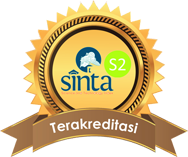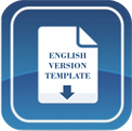THE EFFECT OF MOBILE LEARNING AND LEARNING STYLES ON STUDENTS’ SCIENTIFIC LITERACY IN SALT HYDROLYSIS CONCEPT
DOI:
https://doi.org/10.15575/jtk.v5i2.9087Keywords:
learning style, mobile learning, scientific literacyAbstract
This study aimed to determine the effect of mobile learning and learning style on students’ scientific literacy in the salt hydrolysis concept. This research was conducted at Senior High School 42 Jakarta with a sample of 56 students consisting of 28 students with visual learning style and 28 students with auditory learning style. The sample in the study was randomly selected. The research method used was experimental with 2x2 design level treatment and analyzed by Two-Way ANOVA. The results showed that there were differences in scientific literacy between groups of students who used mobile and traditional learning (without considering learning styles) and groups of students who used a combination of consideration of learning styles and mobile learning. The use of mobile learning has a positive effect on scientific literacy outcomes when applied to group visual learning styles. Whereas, in the audio learning style group, the use of mobile learning media provided lower scientific literacy results compared to traditional learning media.
References
Abdul, H. & Citron, S. P. (2014). Analisis Kemampuan Awal Literasi Sains Siswa pada Konsep IPA. Prosiding Seminar Nasional Kimia, 40-67, Surabaya: Jurusan Kimia FMIPA Universitas Negeri Surabaya. Retrieved from https://repository.ung.ac.id/karyailmiah/show/2750/analisis-kemampuan-awal-literasi-sains-siswa-pada-konsep-ipa-oleh-abdul-haris-odja-citron-payu.html
Agustina, R., & Sitompul, H. (2015). Pengaruh Media Pembelajaran dan Gaya Belajar Terhadap Hasil Belajar Biologi. Jurnal Teknologi Informasi & Komunikasi dalam Pendidikan, 2(1), 1-14. https://doi.org/10.24114/jtikp.v2i1.3273
Boumová, V. (2008). Traditional vs. Modern Teaching Methods: Advantages and Disadvantages of Each. Ceko: Masaryk University Faculty of Arts.
Boyinbode, O. K., & Akinyede, R. O. (2008). Mobile Learning: An Application of Mobile and Wireless Technologies in Nigerian Learning System. International Journal of Computer Science and Network Security, 8(11), 386–392. Retrieved from http://citeseerx.ist.psu.edu/viewdoc/download?doi=10.1.1.460.4453&rep=rep1&type=pdf
Buchari, A., Rahmawati, N. D., & Baedow, S. (2015). Pengembangan Mobile Learning dengan Model TAPPS pada Materi Barisan dan Deret Kelas X Semester I di SMA Nasima Semarang. JKPM, 2(2), 1-7. https://doi.org/10.26714/jkpm.2.2.2015.%25p
Cook, D. A. (2007). Web-Based Learning: Pro, Cons and Controversies. Clinical Medicine, 7(1), 37–42. Retrieved from 10.7861/clinmedicine.7-1-37
DePorter, B., & M. Hernacki. (2002). Quantum Learning: Membiasakan Belajar Nyaman dan Menyenangkan. Bandung: Kaifa.
Faizal, M., & Rahman, A. (2013). The Effectiveness of Web-based Multimedia Applications Simulation in Teaching and Learning. International Journal of Instruction, 6(2). Retrieved from https://eric.ed.gov/?id=EJ1085400
Farida, I., Liliasari, & Sopandi, W. (2013). Pembelajaran Berbasis Web untuk Meningkatkan Kemampuan Interkoneksi Multipel Level Representasi Mahasiswa Calon Guru pada Topik Kesetimbangan Larutan Asam-Basa. Chemica, Jurnal Ilmiah Kimia dan Pendidikan Kimia, 12(1). https://doi.org/10.35580/chemica.v12i1.131
Gappi, L. L. (2013). Relationships Between Learning Style Preferences and Academic Performance of Students. International Journal of Educational Research and Technology, 4(2), 7. Retrieved from http://soeagra.com/ijert/ijertjune2013/11.pdf
Gomes, A., Santos, Ã., Carmo, L., & Mendes, A. J. (2007). Learning Styles in an E-Learning Tool. Paper presented at the meeting of ICEE, Coimbra: Portugal. Retrieved from https://www.researchgate.net/publication/243962007_Learning_styles_in_an_e-learning_tool
Gunawan, Adi W. (2012). Petunjuk Praktis untuk Menerapkan Accelerated Learning. Jakarta: Gramedia Pustaka Utama.
Hadjerrouit, S. (2010). Developing Web-Based Learning Resources in School Education: A User-Centered Approach. Interdiciplinary Journal of E-Learning and Learning Object, 6. Retrieved from https://www.learntechlib.org/p/44777/
Husain, C. (2014). Pemanfaatan Teknologi Informasi dan Komunikasi dalam Pembelajaran di SMA Muhammadiyah Tarakan. Jurnal Kebijakan dan Pengembangan Pendidikan, 2(2), 184–192.https://doi.org/10.22219/jkpp.v2i2.1917
Ikitde G. A., & Edet, U. B. (2013). Influence of Learning Styles and Teaching Strategies on Students’ Achievement in Biology. Voice of Research, 1(4), 5-13. Retrieved from https://ideas.repec.org/p/vor/issues/2013-5-2.html
Istyadji, M. (2007). Penerapan Paduan Model Pembelajaran Siklus Belajar dengan Kooperatif GI untuk Meningkatkan Kualitas Proses dan Hasil Belajar Siswa SMA. Tesis, PPS Universitas Negeri Malang.
Koc, M. (2005). Individual Learner Differences in Web-based Learning Environments: From Cognitive, Affective and Social-cultural Perspectives. Turkish Online Journal of Distance Education, 6(4), 12–22. Retrieved from https://eric.ed.gov/?id=ED494748
Masrimuna, Esihana. (2014). Pengaruh Gaya Belajar Menurut Kolb Terhadap Kemampuan Literasi Sains Siswa. Skripsi, Universitas Negeri Jakarta.
OECD. (2009). PISA 2009 Assessment Framework: Key Competencies in Reading, Mathematics, and Science. Paris: OECD Publishing.
OECD. (2015). PISA 2015 Results in Focus. Paris: OECD Publishing.
Penciner, R. (2013). Does Powerpoint Enhance Learning?. Canadian Journal of Emergency Medicine, 15(2), 109 - 112. https://doi.org/10.2310/8000.2013.130756
Sharma, A., Ghandar, K., Sharma, S., & Seema. (2011). Role of ICT in the Process of Teaching and Learning. Journal of Education and Practice, 2(5), 1 - 5. Retrieved from https://www.iiste.org/Journals/index.php/JEP/article/view/489/374
Suroso. (2012). Penerapan Model Pembelajaran Kontekstual dalam Meningkatkan Keterampilan Proses dan Hasil Belajar Sains Siswa Kelas V SD No 5 Bandung. Skripsi, Universitas Pendidikan Indonesia.
Yao, T. S., Chan K. S., & Chien, T. L. (2016). The Effects of Integrating Mobile Devices with Teaching and Learning on Students’ Learning Performance: A Meta-Analysis and Research Synthesis. Elsevier Computers & Education, 94, 252-275. https://doi.org/10.1016/j.compedu.2015.11.008
Downloads
Published
How to Cite
Issue
Section
Citation Check
License
Authors who publish with this journal agree to the following terms:
- Authors retain copyright and grant the journal right of first publication with the work simultaneously licensed under a Creative Commons Attribution-ShareAlike that allows others to share the work with an acknowledgement of the work's authorship and initial publication in this journal.
- Authors are able to enter into separate, additional contractual arrangements for the non-exclusive distribution of the journal's published version of the work (e.g., post it to an institutional repository or publish it in a book), with an acknowledgement of its initial publication in this journal.
- Authors are permitted and encouraged to post their work online (e.g., in institutional repositories or on their website) prior to and during the submission process, as it can lead to productive exchanges, as well as earlier and greater citation of published work (See The Effect of Open Access).








